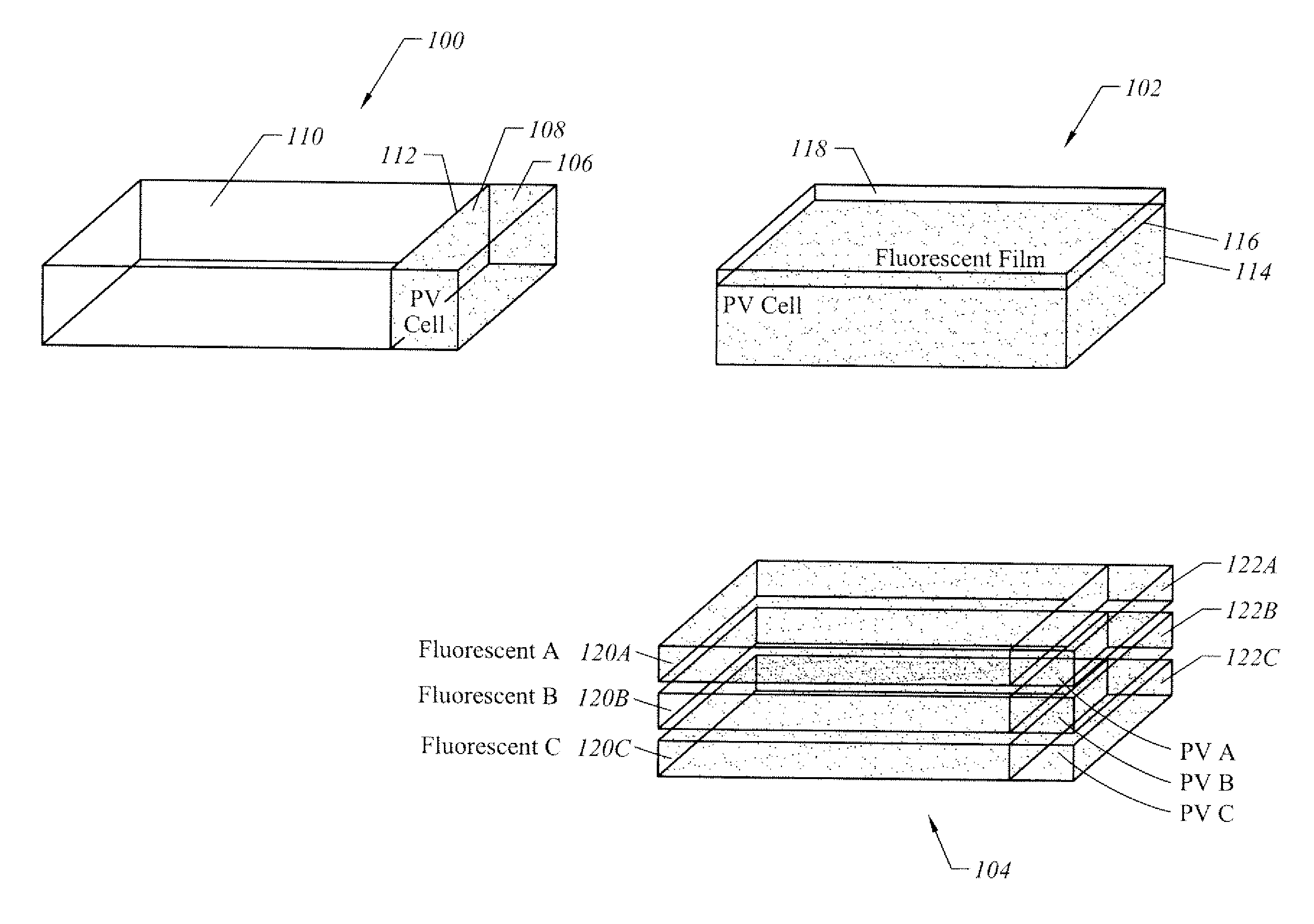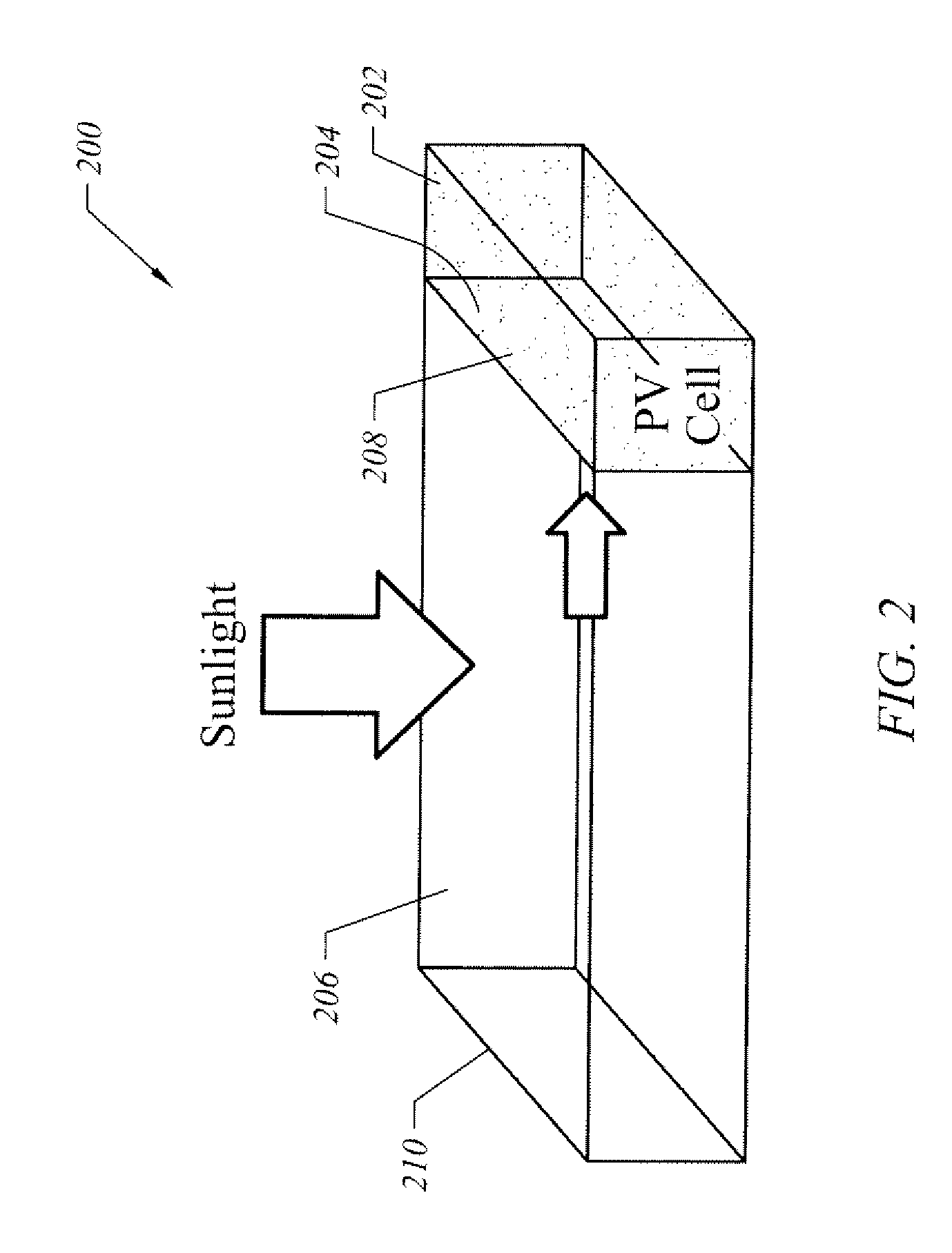Solar modules with enhanced efficiencies via use of spectral concentrators
- Summary
- Abstract
- Description
- Claims
- Application Information
AI Technical Summary
Benefits of technology
Problems solved by technology
Method used
Image
Examples
Embodiment Construction
Overview
[0017]Embodiments of the invention relate to solar modules having enhanced efficiencies with respect to conversion of incident solar radiation to useful electrical energy. For some embodiments, a solar module includes a spectral concentrator and a set of PV cells that are optically coupled to the spectral concentrator. The spectral concentrator can perform a number of operations, including: (1) collecting incident solar radiation; (2) converting the incident solar radiation to substantially monochromatic radiation near a bandgap energy of the PV cells; and (3) conveying the converted radiation to the PV cells, where the converted radiation can be converted to useful electrical energy. By converting a wide range of energies of the incident solar radiation to a narrow band of energies matched to the bandgap energy of the PV cells, significant improvements in efficiency can be achieved. In addition, the design of the PV cells can be optimized or otherwise tailored based on this...
PUM
 Login to View More
Login to View More Abstract
Description
Claims
Application Information
 Login to View More
Login to View More - R&D
- Intellectual Property
- Life Sciences
- Materials
- Tech Scout
- Unparalleled Data Quality
- Higher Quality Content
- 60% Fewer Hallucinations
Browse by: Latest US Patents, China's latest patents, Technical Efficacy Thesaurus, Application Domain, Technology Topic, Popular Technical Reports.
© 2025 PatSnap. All rights reserved.Legal|Privacy policy|Modern Slavery Act Transparency Statement|Sitemap|About US| Contact US: help@patsnap.com



